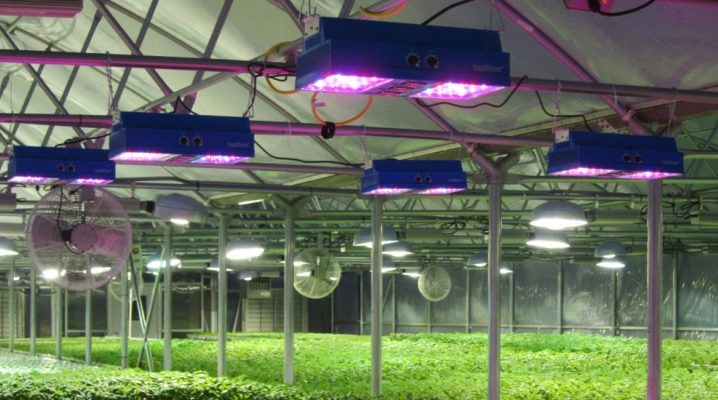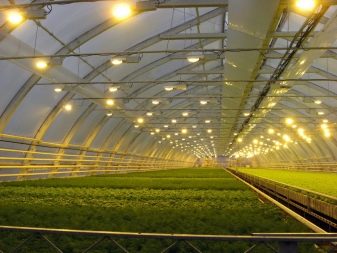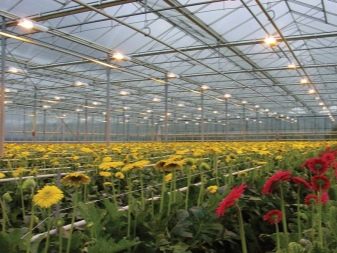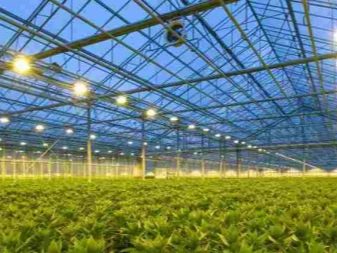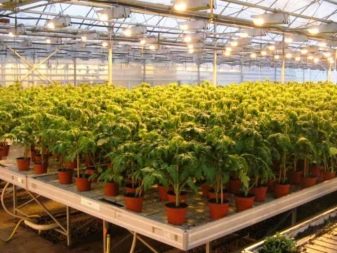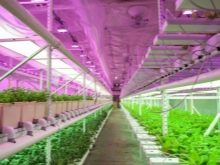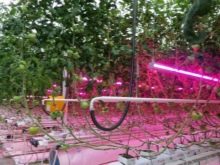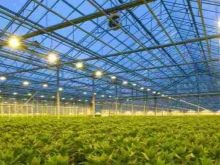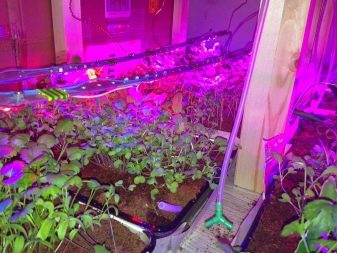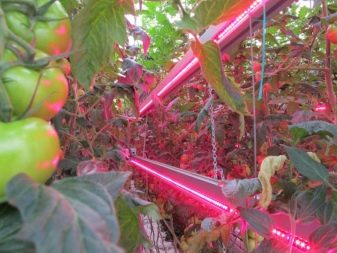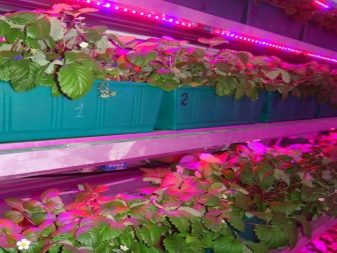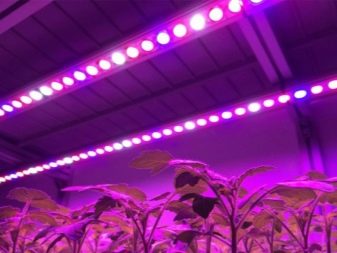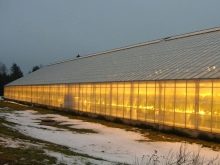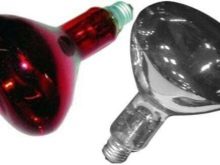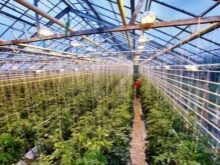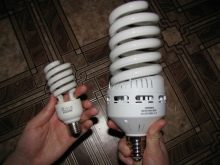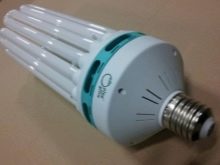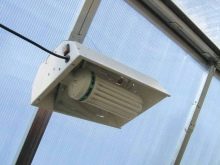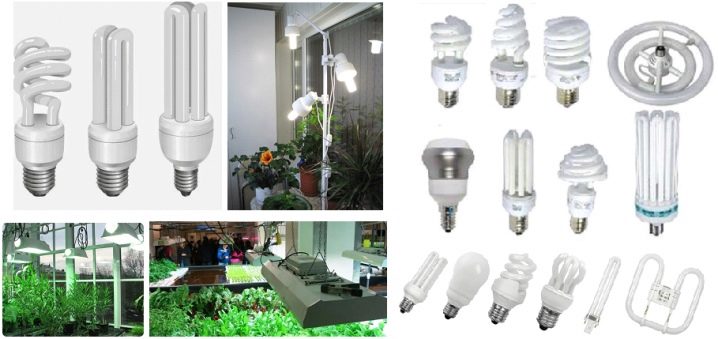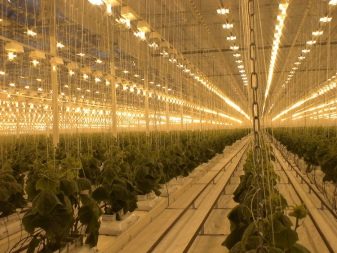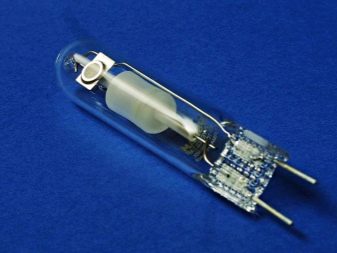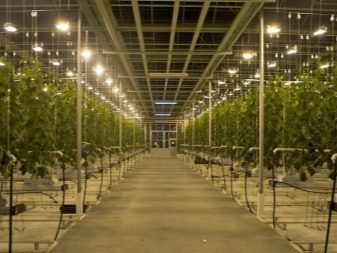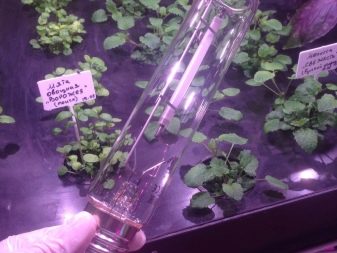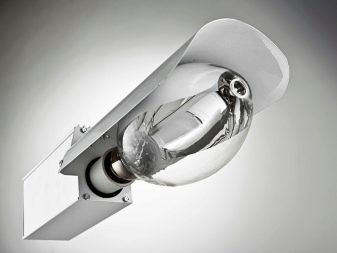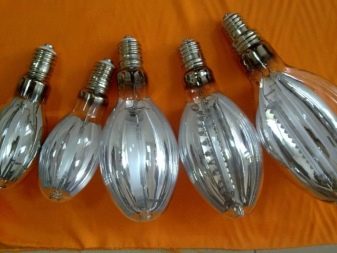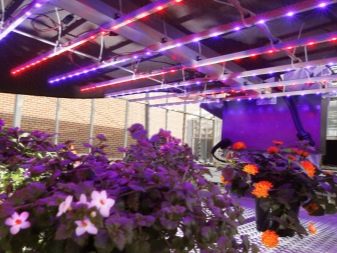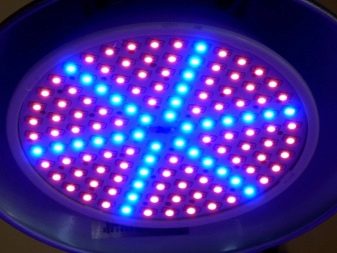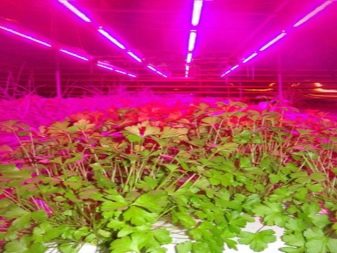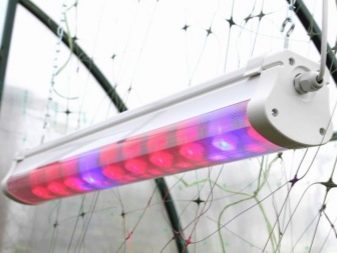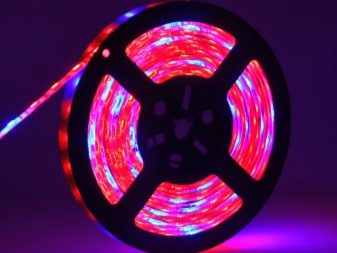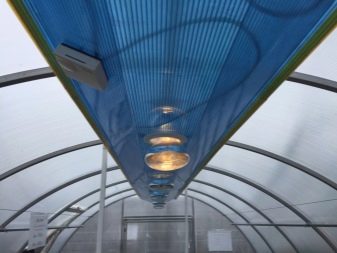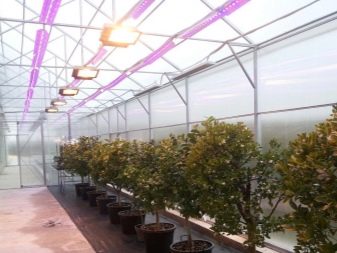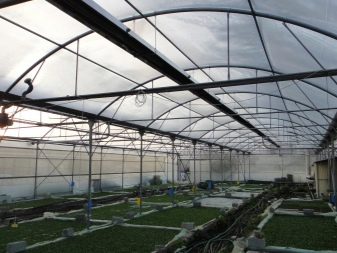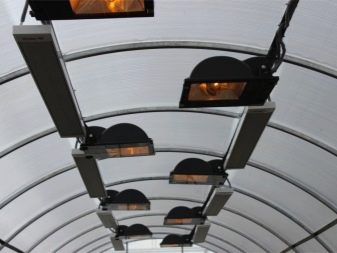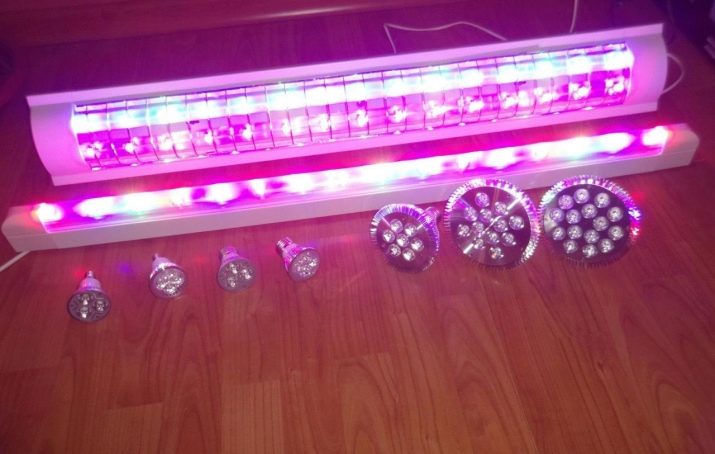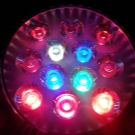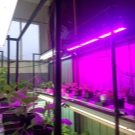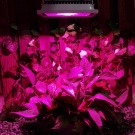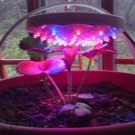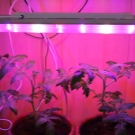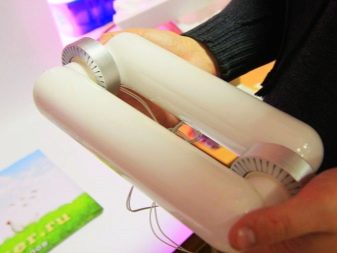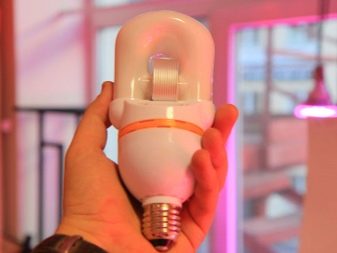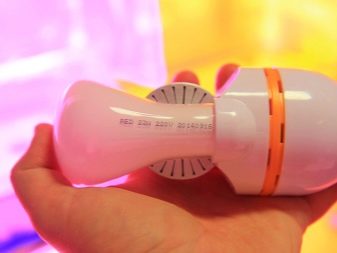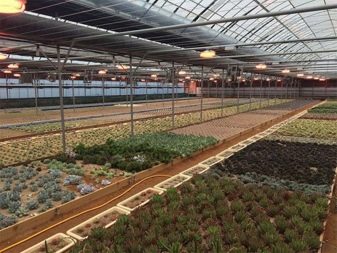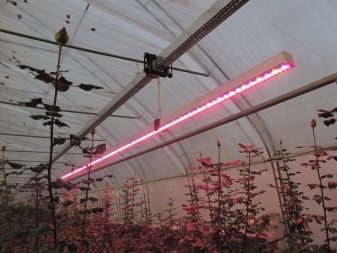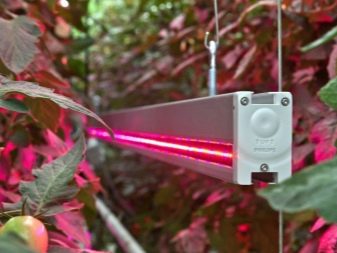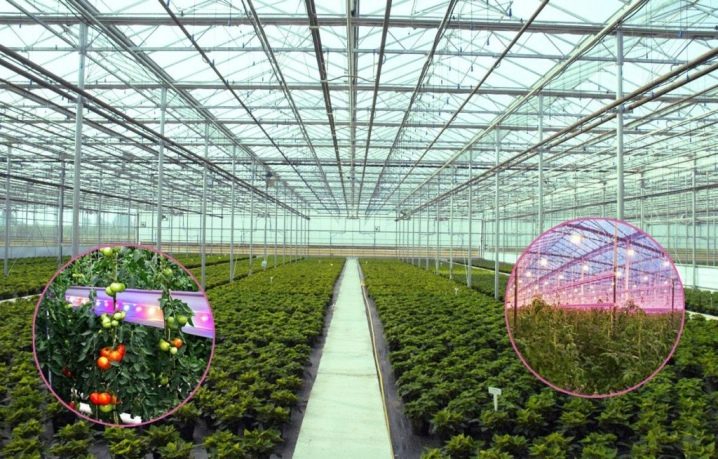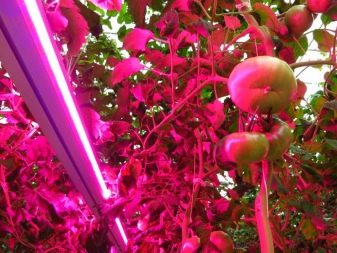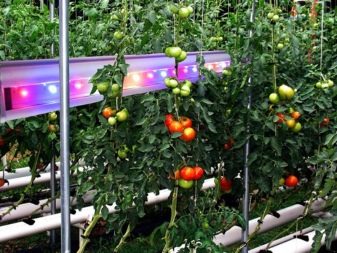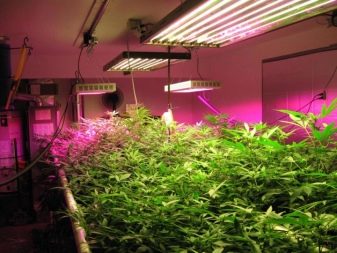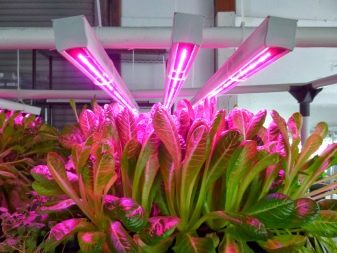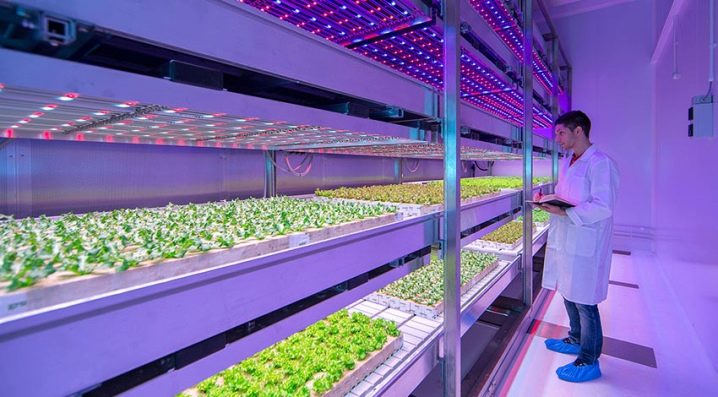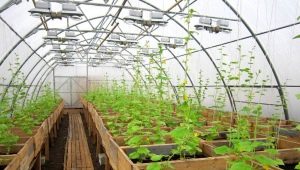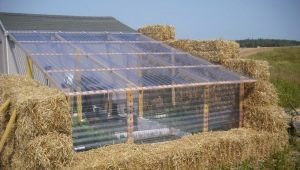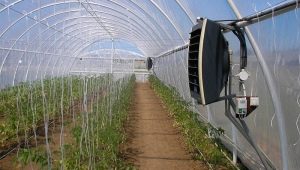Lamps for greenhouses: selection criteria
Every self-respecting farmer is interested in high yields of his crops. To do this, it is necessary to study not only the requirements for lighting, but also to have at least a superficial idea of the types of light sources, the main criteria for their choice. This will make up for the lack of light and sometimes heat, which is important for plant growth and development.
Lighting Requirements
Each greenhouse should be lit with the existing standards of illumination. You need to know how much light per day is necessary for a particular type of plant and relate it to the size of the whole structure. This is especially important in spring and autumn, when light crops are lacking due to the reduction of daylight hours. Lamps are bought, first of all, for artificially increasing daylight hours.
However, the creation of comfortable conditions must obey certain rules. For example, it should not be allowed that artificial lights completely replace natural daylight.
This means that the lamps must be installed in places that do not block the access of sunlight to all plants.
You need to acquire those options that can be used for 16 hours in a row per day every day. Do not buy devices that work constantly, because of this growing culture will be thinned, weak and sluggish. Lighting should be correct, taking into account the need for illumination of crops (from 12 to 16 hours). If they are not designed for this, the growth and development of crops may stop.
It is important to choose the power and number of fixtures correctly, choosing products with a nanometer range from 400 to 700. If this figure is below the minimum mark, this will negatively affect the photosynthesis of the plants grown. When it exceeds the maximum rate, it also harms crops.
Luminaires for additional lighting can have different types of daylight and nighttime illumination. For example, it may be devices replenished by the lack of light absorbed by plants during natural light by means of ultraviolet rays.As a rule, such luminaires have a range of supplied light energy density from 400 to 1 thousand mmol / m2. In addition, the lighting can be photoperiodic. Pulsed artificial sun can be used in winter - it is suitable for day and night illumination and requires about 5-10 mmol / m2.
Types of lamps
Today, to illuminate greenhouses use different light sources. In addition, each type has not only advantages, but also disadvantages.
Incandescent lamps
These sources of light today are considered a relic. They get very hot, most of the electrical energy is converted into heat. Advantage could be called their price, although they are uneconomical and have low efficiency. They have a high power consumption compared to other varieties. At the same time, they are suitable not for all types of plants.
For example, it is not recommended to include them in the greenhouse to illuminate the seedlings of cucumbers, tomatoes. However, they can be used to grow onions and parsley. Due to the wide emission spectrum of red, infrared and orange rays, they can lead to burns of vegetable stems.
In addition, long-term illumination of the greenhouse with such lamps may contribute to elongation of the shoots and leaf deformation.
Energy saving
Fluorescent lamps have a more beneficial effect on plants. They are distinguished by relatively inexpensive cost and versatility, they can shine with cold, warm and neutral light for about 2 thousand hours. It is better to use them for structures of small size, since they are needed a lot for spacious territories. The advantages of these lamps include efficiency and a full range of radiation. This allows the use of daylight devices at any stage of growth and development of grown crops.
In addition, they practically do not heat up, which means that they do not harm the microclimate of the greenhouse. These are light sources that do not need special technical installation skills. Disadvantages include the fear of moisture and not always compact dimensions, low light output, as well as a response to changes in the temperature background. For normal work inside the greenhouse should be at least +26 degrees.
Mercury options
Perhaps this is the most dangerous devices that emit ultraviolet waves.Despite the fact that they contribute to the active photosynthesis of plants and have a radiation spectrum close to red, they are harmful to a greater extent than other species. For example, this concerns not only harm to plants, but even exploitation itself, because if such a lamp is accidentally broken, then you can forget about the harvest.
Not only will it not be possible to collect poisonous mercury balls and it will be necessary to destroy the plants, so the soil will also need to be changed. The radiation from these lamps is too intense.
It is also worth noting that the lamps after use will not be able to simply throw away: they are disposed of by a special technique. Practice shows that they do not produce the required number of hours and burn out earlier.
Sodium
These varieties can be distinguished by the characteristic orange and reddish range of the color spectrum. They are close to natural light, although there are still differences in the balance of red and blue. Therefore, such light bulbs are best used for indoor cultivation. For cultivation in closed ground, you can purchase special versions of luminaires with mirrored reflective panels - such products significantly increase efficiency.
The advantages of sodium light bulbs are low consumption of electrical energy, high resource (about 20 thousand hours), as well as high light output. However, with all this, such light sources are characterized by a small amount of blue rays. According to gardeners, these light bulbs attract insect pests. Despite the fact that they can be used in spacious greenhouses, they generate heat in the process.
On the one hand, it is not bad and allows you to warm the room, which is especially important in winter, but on the other hand, excessive heating makes it more thoroughly monitor the temperature regime of growing greenhouse plants. With regards to the red radiation, it is worth noting that because of it, the saplings are being pulled out in growth, at the same time thinning. It is impossible not to denote the harmfulness of lamps, because inside them contains a mixture of mercury and sodium. In addition, these types of lamps will not be able to illuminate the greenhouse when voltage fluctuates in the network, if they are more than 5%.
LED light
These high-pressure light bulbs are called LED or LED. They work from LEDs with a wide color spectrum of a shade of a luminescence.Today it is the most modern devices, but with a directed luminous flux. They can be used to compensate for the lack of illumination of the greenhouse at any stage of development of cultivated plants.
As a rule, so-called ribbon luminaires are more often used for illumination.
Lighting greenhouses with LED strips allows you to quickly and correctly select the desired power. You can choose the variants in one or two rows of diodes of the desired tone and intensity based on their required total power. These bulbs are small and even compact, but quite powerful and bright. They practically do not heat up in the process of work, they are able to function at low voltage.
Their resource is about 100 thousand hours of work. These lighting devices are characterized by resistance to moisture, changing the temperature background of the greenhouse, they are difficult to damage by random mechanical shocks. However, with a lot of advantages they are distinguished by high cost. This fact is the main disadvantage of lamps of this type.
Infrared
Such lamps are remarkable in that they are economical and perfectly heat the room during the cold season.Each lamp that heats the soil does not heat the air, as it is characterized by the ability to transfer energy to the soil and the plants themselves. This feature makes the lamps most popular among other varieties. After the temperature of the soil rises, it increases in the air.
In other words, the action of such lamps differs from other options in that in this case the soil warms up first, and then the air, while the principle of action of other analogues is opposite. At the same time, the air does not become dry, which is important for developing crops and their cultivation. However, the purchase of such light sources requires the acquisition of regulators that turn on when the temperature inside the greenhouse changes.
The lamps themselves are good - they are silent in operation and durable.
Phytolamps
This category includes light sources with a red, blue and white emission spectrum. Hothouse phytocalls are a good support for the growth and development of plants, as well as their high yield. The use of such products allows plants to absorb chlorophyll A, which is the main source of nutrition.
These bulbs help to accelerate the growth of not only the above-ground parts of plants, but also their root system. In addition, they contribute to enhancing the immunity of crops through the production of phytohormones. Along with the acceleration of metabolic processes, the use of lamps affects the appearance of the plants themselves.
Induction
The work of these products is nothing like the glow of the phosphor. They are an improved version of luminescent counterparts, characterized by the same light output with high clarity and no flicker. The lamps have a built-in stabilizer, which is protection from power surges. In the process, they heat up, but not much, which allows them to be mounted near plants.
Such lamps provide installation on cables, therefore after installation the gardener has an opportunity to carry out adjustment of light sources on height, choosing the best option. Such lighting does not require dismantling in winter.
However, these lamps have a drawback: their cost is quite noticeable, especially in cases where the gardener is trying to fill them with a large greenhouse space.
What to choose?
In order not to doubt and not go to extremes when buying, it is necessary to identify the main selection criteria. For example, initially it is necessary to determine the type of lamps in order to understand whether they are suitable for a particular greenhouse. It can be not only the usual standard variants, but also bactericidal varieties. It is worth paying attention to the material from which the lamps are made.
It is better if the lamps are made of metal that is resistant to rust. At the same time, the construction should, if possible, be protected from the moisture characteristic of greenhouses. Choosing one or another option, it is worth giving preference to products of proven manufacturers. Such products, as a rule, are carried out in strict accordance with established standards and are of high quality.
It is impossible not to take into account the total power, for which they measure the area of the greenhouse itself and relate it to the required artificial lighting resource. In addition, you need to take into account the light spectrum. If possible, preference should be given to options that provide for power control and are used not only in the initial stages of crop development, but also before harvest.Each purchased product must be useful, corresponding to the required intensity and duration of the radiation time interval.
For different plants. To light a greenhouse with ordinary incandescent bulbs is almost useless. It is important to take into account the fact that they do not have a blue tone flow, and therefore are used in greenhouse conditions is extremely rare. It is important to take into account the different needs of the cultivated crops.
For example, cucumbers need lighting with automation, while the need for lighting is at least 12 hours per day.
About 6 hours the plant needs darkness, and for growth it is better to purchase a version of the lamp with blue radiation. However, at the time of flowering and the formation of ovaries it is necessary that the color of the flow of the lamp be red. If you take into account the onions, then this culture is more suitable lighting through fitolamp. For strawberries, however, need fluorescent lamps with a length of about a meter. Well, if their power will be at least 40-50 watts.
Strawberries need long light. In this case, it is worth buying lamps that can shine for a long time, regardless of the mains voltage. Some gardeners use fluorescent lamps as well as mercury lamps to speed up their fruiting.They contribute to an increase in photosynthesis, a positive effect on the growth of culture and the color of its leaves.
If you apply additional artificial lighting for such a berry, then this will affect not only early fruiting, but also yield. Auxiliary lighting is also useful for tomatoes. However, in this case, it is not so much the direct as the scattered light flux that is important. In addition, it is also important that it should not shine around the clock, as this may lead, for example, to chlorosis of the culture.
For greenhouses from different materials. In addition to the characteristics of specific crops grown, when choosing lamps to replace or replenish natural lighting, it is necessary to take into account the type of material from which the greenhouse building was erected. Taken together, this will increase yields and grow a strong culture. Farm experience shows that even for polycarbonate constructions it is better to use several types of lamps to provide plants with full development. For example, you can combine halogen, LED and fluorescent varieties. At the same time it is impossible to supply greenhouses from polycarbonate with incandescent lamps.
When it comes to industrial facilities, in such greenhouses they never use incandescent bulbs. LEDs are not suitable for them due to the high cost of the total. For such buildings, sodium lamps are used, which are as close as possible to sunlight in the light spectrum.
For glass structures, sodium lamps are the best solution, besides their light output is much higher in comparison with luminescent analogues.
Recommendations
To the choice of the necessary light sources was correct and safe, you should pay attention to the recommendations of experienced professionals. For example, red and blue rays have a better effect on the growth and development of plants, however, the contour of the greenhouse should not be deprived of natural light. If you ignore this fact, the grown fruits of plants can not only lose the taste, but also become completely unsuitable for consumption.
If you choose one color for lighting, it will only have a favorable effect on colors. Choosing blue color, it is worth noting that it is really able to improve the process of photosynthesis.When the greenhouse is illuminated with green or yellow rays without auxiliary illumination under natural sunlight, this may cause deformation of the emerging crops and thinning of the shoots.
Even the use of red and orange rays should be dosed, because when there are too many, it can lead to the death of plants. It is important to understand that for good yields it is necessary to choose a backlight with different shades of light fluxes.
The same can be said about infrared and ultraviolet rays: their abundance harms grown plants.
It is important to choose the backlight so that it is at the optimal distance from light sources to the leaves of developing plants. Among the large selection of different types it is worth noting the fact that the lamps that illuminate the seedlings in the apartment are different from those that are purchased specifically for greenhouses. For example, for greenhouses, it is better to choose sodium options for high pressure and LED strips, while for growing seedlings before planting, both conventional fluorescent fluorescent lamps and daylight glow phyto-panels as well as homemade phytopanels are suitable.However, if you do not want to make such products, you will have to buy light bulbs in the store.
On how to choose the right lamp for greenhouses, see the following video.
